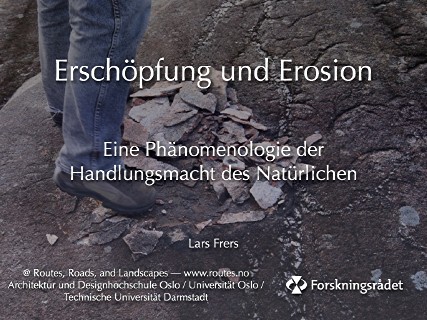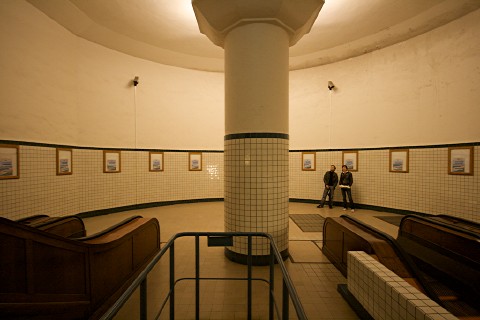 Am 18. und 19. Juni konnte ich erfreulicherweise auf der wirklich spannenden gemeinsamen Tagung der Sektionen Wissenschafts- und Technikforschung und Umweltsoziologie der DGS einen Vortrag halten. Zum Glück habe ich während des Vortrags die Verwendung von Füllwörtern wie
Am 18. und 19. Juni konnte ich erfreulicherweise auf der wirklich spannenden gemeinsamen Tagung der Sektionen Wissenschafts- und Technikforschung und Umweltsoziologie der DGS einen Vortrag halten. Zum Glück habe ich während des Vortrags die Verwendung von Füllwörtern wie sozusagen
,halt
,eben
und so weiter einigermaßen im Griff gehabt, so dass es mir nicht zu unangenehm ist, die Aufnahme des Vortrags hier im Internet zur Verfügung zu stellen. (Üblicherweise nutze ich die Möglichkeit mit meiner Präsentationssoftware, Apples Keynote, einen Vortrag aufzuzeichnen. Nicht immer ist die Qualität gut genug zur Weitergabe, aber in jedem Fall ist es genauso schmerzhaft wie lehrreich, sich den eigenen Vortrag mit etwas Abstand noch einmal anzuschauen.) Hier jedenfalls das Abstract für den Vortrag und im Anschluss der Verweis zum aufgezeichneten Video.
Aufbauend auf einer Studie über besonders eindrucksvoll gestaltete Aussichts- und Rastplätze auf der Norwegischen Tourismus Route (routes.no) will ich in dieser Präsentation die Wirk- oder Handlungsmacht des Natürlichen thematisieren. Im Vordergrund steht dabei weniger eine Diskussion des Natürlichen als Kategorie, sondern vielmehr die agency
, die sich an diesen Orten entfaltet. Der Norwegische Tourismusverbund und das staatliche Verkehrswesen präsentieren diese Orte als Modellhaft. Hier zeigt sich die norwegische Landschaft in ihrer vollen Pracht – und zwar gerahmt durch spezifisch skandinavisches Design. Diese Orte sind in der Tat beispielhaft für die Kategorie des Sublimen – Natur zeigt sich hier genauso schön wie schrecklich. Was bedeutet dies jedoch im Alltag dieser Orte? Im Zentrum der hier präsentierten Untersuchung steht sowohl die langsam zerstörende Wirkung der Erosion wie auch der plötzliche Eingriff eines Wetterereignisses. Im Sinne einer Phänomenologie des hier untersuchten Ortes begrenzt sich die Untersuchung des Natürlichen aber nicht auf das Natürliche ausserhalb des eigenen Körpers. Die eigene Natur ist mit eingeschlossen und sie ist in sehr konkreter Weise ein entscheidender Anlass für den Halt an einem Ort. Die Erschöpfung einer längeren Reise im Auto, der ordinäre Druck der Blase – auch diese natürlich-leiblichen Prozesse treten hier zu Tage und prägen den kreativen Umgang mit der Materialität und sozialen Normung dieser Orte. Anhand von Fotografien, Videomaterial und ethnografischen Aufzeichnungen wird in dieser Präsentation des große Potential einer offenen Auseinandersetzung mit technisierten Räumen der Mobilität aufgezeigt – einer Auseinandersetzung in der die prozesshafte und oft unerwartete Verquickung von Handlungen, Wahrnehmungen, Ereignissen und Routinen in ihrer ganzen Spannungsgeladenheit thematisiert wird.
Videoaufzeichnung des Vortrags (30 min):
Ogg Theora Video (49.4 MB, abspielen mit VLC)
QuickTime Video (62.2 MB, abspielen mit QuickTime)
Die Tagung lief unter dem vielversprechenden Titel Technik und die Wiederkehr der Natur – Zur Ästhetik der schöpferischen Zerstörung und wurde am Helmholtz-Zentrum für Umweltforschung in Leipzig ausgerichtet.
 Three weeks ago, Alexander Schellow and I conducted a workshop called spatial research at the
Three weeks ago, Alexander Schellow and I conducted a workshop called spatial research at the